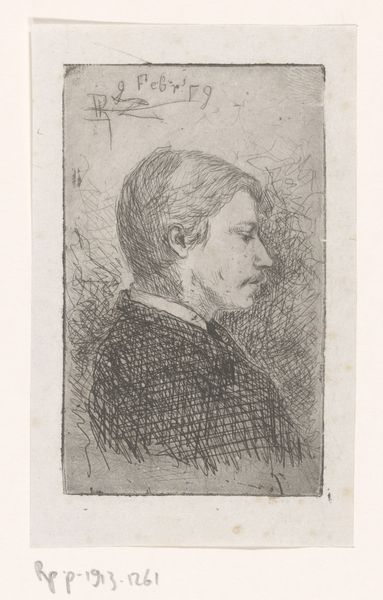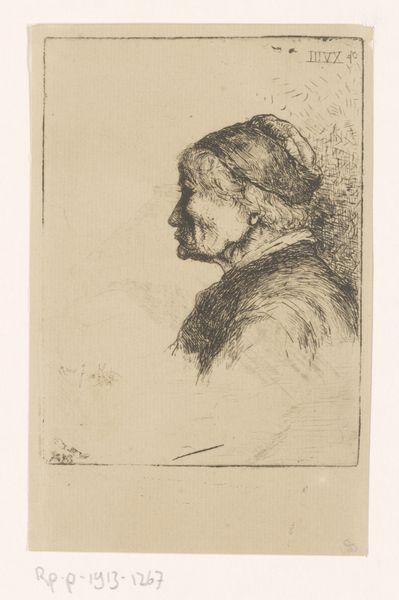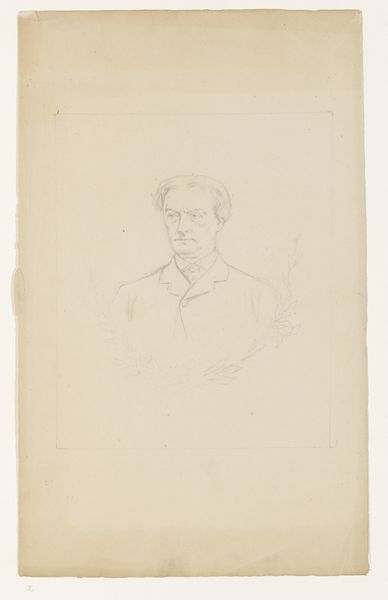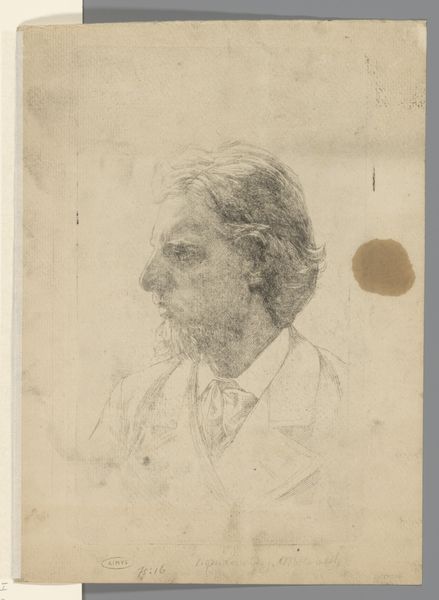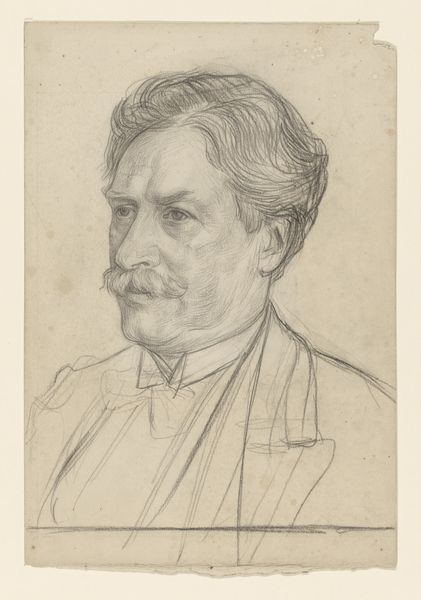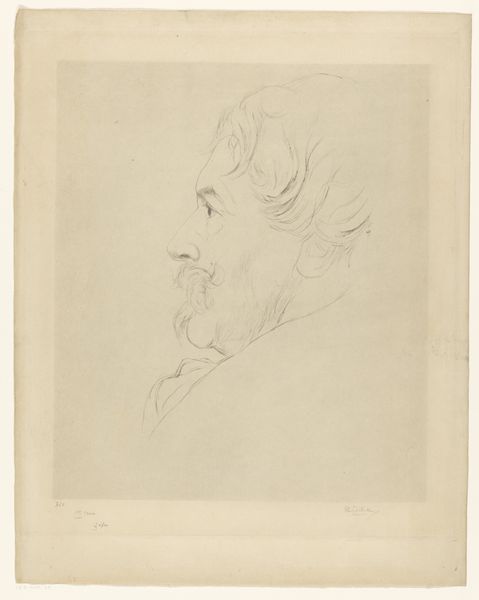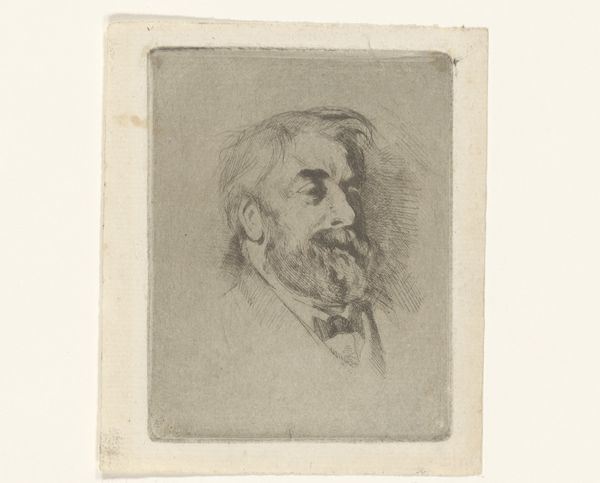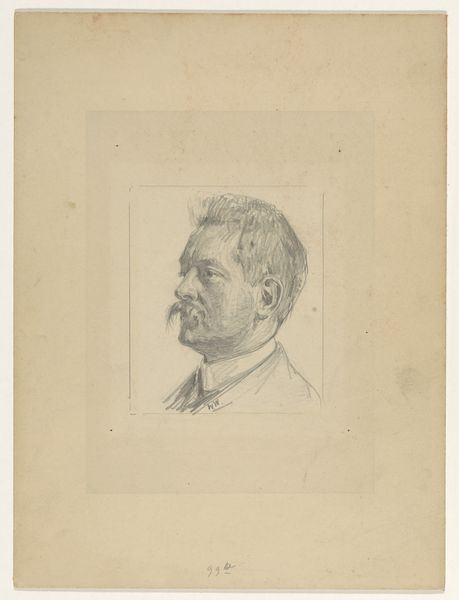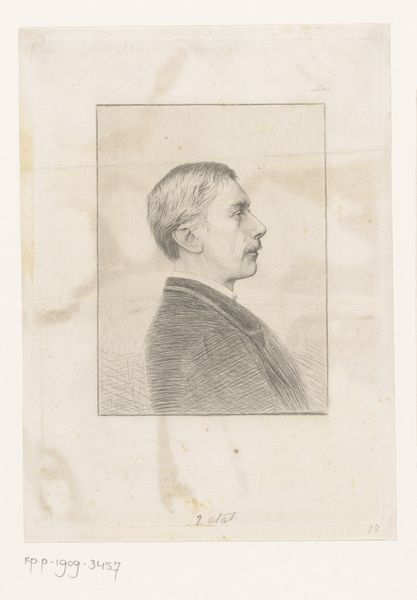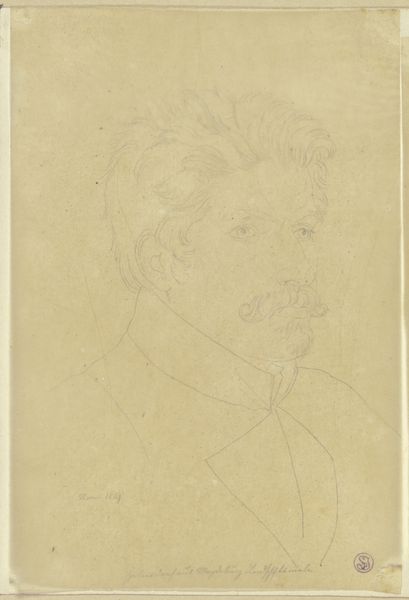
drawing, print, etching, pencil
#
portrait
#
pencil drawn
#
drawing
#
16_19th-century
# print
#
etching
#
pencil sketch
#
etching
#
pencil drawing
#
pencil
#
realism
Dimensions: height 101 mm, width 61 mm
Copyright: Rijks Museum: Open Domain
Philip Zilcken made this portrait of a man using etching, a printmaking technique that democratized image production in the 19th century. The fine lines you see are the result of a painstaking process. Zilcken would have coated a metal plate with a waxy, acid-resistant substance, then drawn his image with a sharp needle, exposing the metal underneath. Immersing the plate in acid would bite into the exposed lines, creating grooves. Ink is then applied to the plate and the surface wiped clean, leaving ink only in the etched lines. Finally, the plate is pressed onto paper, transferring the image. The beauty of etching lies in its capacity for subtle tonal variations, achieved by varying the depth and density of the etched lines. It offered artists a direct way to translate drawings into print, and allowed for multiple impressions to be made, distributed and consumed. The labor-intensive process, however, often involved workshops and assistants, reflecting the era’s changing modes of artistic production and consumption. This reminds us that even seemingly straightforward images have a complex story to tell about their making.
Comments
No comments
Be the first to comment and join the conversation on the ultimate creative platform.

